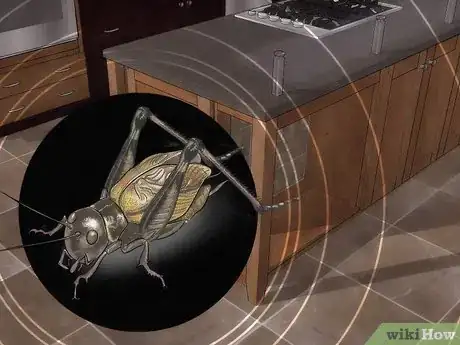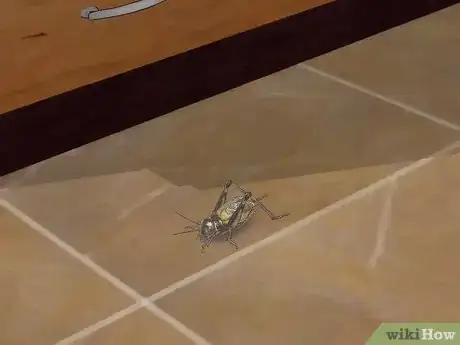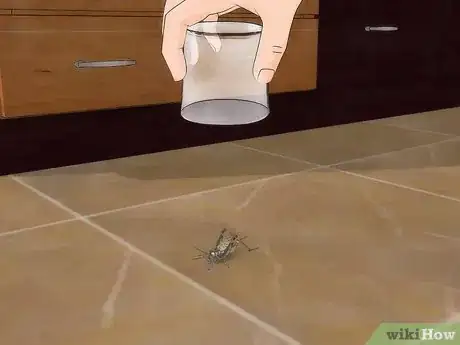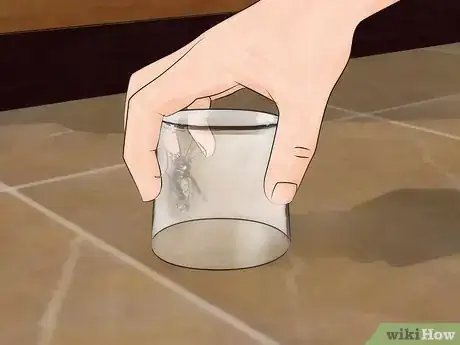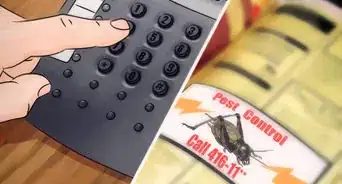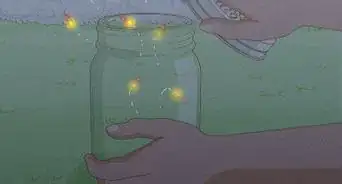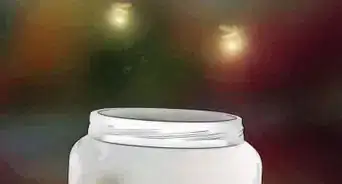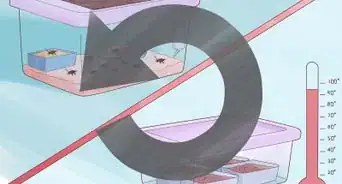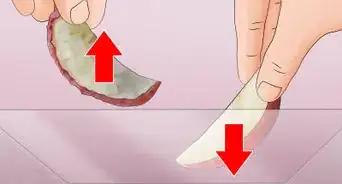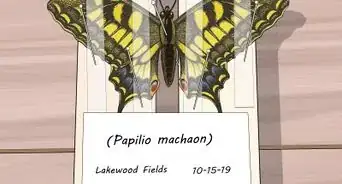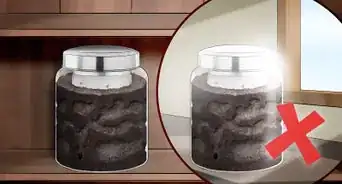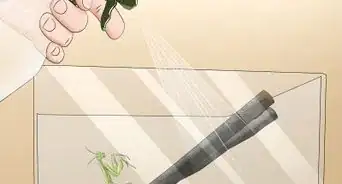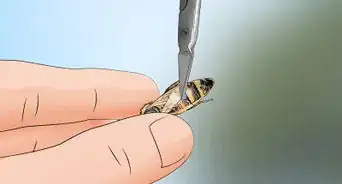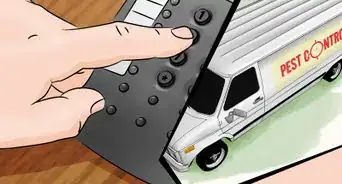This article was co-authored by Samuel Ramsey, PhD. Dr. Samuel Ramsey is an Entomologist and a researcher with the United States Department of Agriculture. Dr. Ramsey has extensive knowledge of symbiosis and specializes in insect disease spread, parasite behavior, mutualism development, biological control, invasive species ecology, pollinator health, and insect pest control. He holds a Bachelor’s degree in Entomology from Cornell University and a Ph.D. in Entomology from the University of Maryland. Dr. Ramsey’s research on bees has enabled researchers to develop targeted control techniques to restore honey bee populations worldwide. He also hosts a YouTube series called “Dr. Buggs.”
This article has been viewed 128,563 times.
While crickets may be cute up close, they can damage house plants, furniture, and clothes, if given free rein in a house. They can also chirp for incessant periods of time, which you may well know if you are reading this article. If you suspect a few of these critters have taken up residence in your home, one solution is to squash the crickets or use insecticides. However, if you're feeling compassionate towards the bugs, or are just not in the mood for cleaning up cricket guts, here's a simple way to catch and release your crickets.
Steps
-
1Locate the cricket(s). In order to do this you will need a quiet house. Carefully go from room to room listening for the characteristic chirping. Crickets can usually be found underneath furniture or appliances and in closets. If, however, you suddenly turn the lights on in a previously dark room they may be out in the open.[1]
-
2Gather the materials listed in the Things You'll Need section below. A large, clear drinking glass is preferable, so that the rim can safely enclose the cricket without out touching any antennae.Advertisement
-
3Make sure the cricket is out in the open on a mostly flat surface. If they are underneath something, you may have to rearrange furniture or shock them out. Try flourishing a long, thin object or brandishing a flashlight in the area where the cricket is hiding. Unfortunately, you will have lost the element of surprise after that.
-
4Crouch down next to the cricket and position the glass directly over the bug, upside down.
-
5Lower the glass slowly and steadily. If you make any jerky movements, the cricket will jump three to four feet depending on its size, so steady the hand and move down slowly until the cricket is trapped.
-
6Place the paper next to the glass on the floor. Slide the glass over the paper.
-
7Scrunch up the paper around the edges of the glass and pick up the cricket.
-
8Set your cricket free through a window or door.
Community Q&A
-
QuestionI hear a cricket that seems to be coming from the air conditioning vent. How do I get rid of it?
 Community AnswerIf you don't care if it dies, get sticky traps and food traps.
Community AnswerIf you don't care if it dies, get sticky traps and food traps. -
QuestionHow do I locate a cricket?
 Community AnswerListen for the chirping. Just keep following the sound until you find your cricket.
Community AnswerListen for the chirping. Just keep following the sound until you find your cricket. -
QuestionI have a pet cricket named Joey, and he's lonely. There are no crickets in my house; I need a quick and easy guide on how to find crickets and where they mostly live.
 Community AnswerMost of them live in long, weedy grass. Try looking in open, grassy areas in bright sunlight. Sit down or get close to the grass and watch for a while. Also, try rustling the grass. It is likely that crickets will jump when you do this.
Community AnswerMost of them live in long, weedy grass. Try looking in open, grassy areas in bright sunlight. Sit down or get close to the grass and watch for a while. Also, try rustling the grass. It is likely that crickets will jump when you do this.
Warnings
- Sometimes the only way to get rid of a cricket is to squish it. This can be an unpleasant process however, because of their meaty nature. If you have a serious cricket infestation in your house consider using insect poison.⧼thumbs_response⧽
- Don't drop the cricket when it's jumping around inside the cup.⧼thumbs_response⧽
- Wash the glass and your hands after using it.[2] Crickets are known to carry disease causing germs that cause painful sores in humans.⧼thumbs_response⧽
- Crickets love clutter, especially cardboard boxes. If your house has humid and cluttered places, the crickets might end up reproducing and making a mess.⧼thumbs_response⧽
Things You'll Need
- Large drinking glass (preferably clear)
- Sheet of paper
